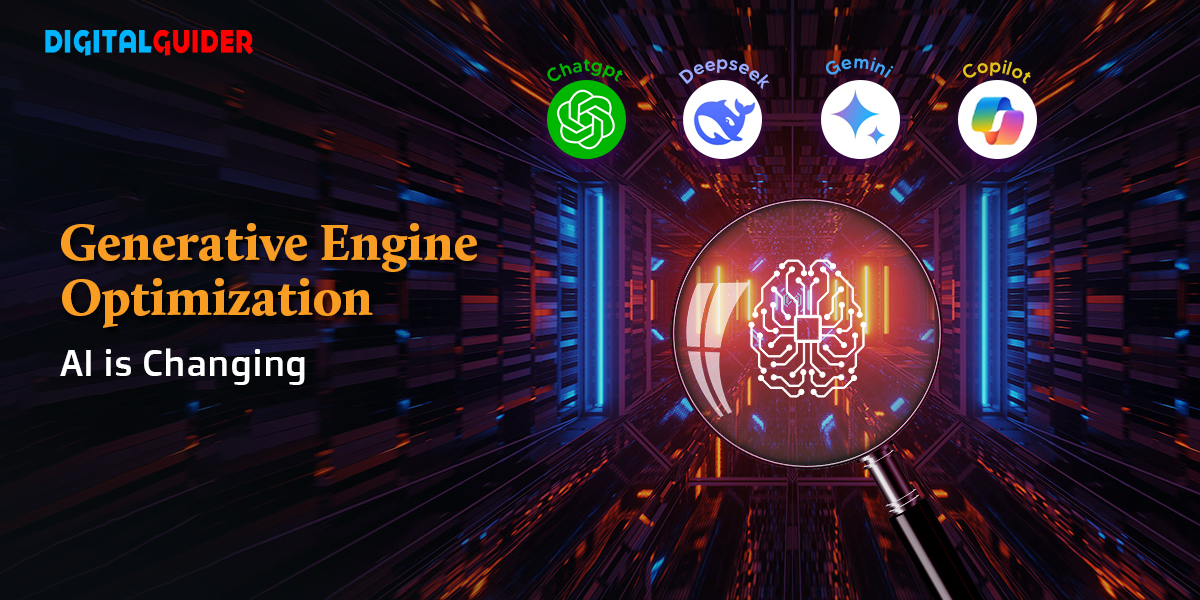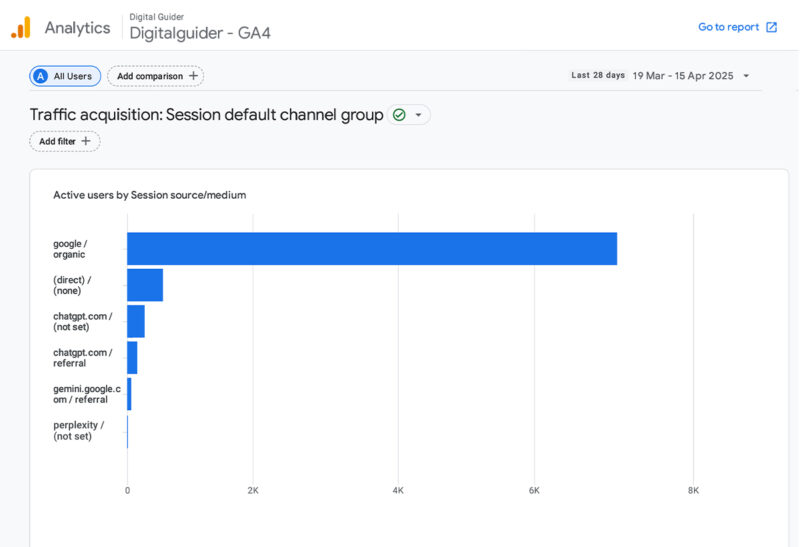Ever wondered how AI chatbots like Chatgpt or Bing Copilot affect search results? With Generative Engine Optimization (GEO), search engines are changing how they find and rank content.
What if your blog shows up in Chatgpt responses? Just like ours
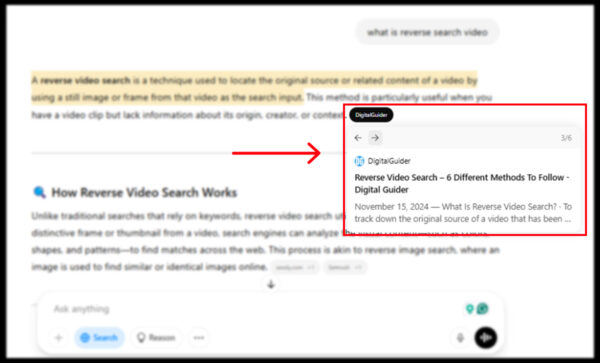
See our blog is appearing in AI search results like Chatgpt, showcasing how GEO is changing the SEO game.
In this blog, we’ll explore how GEO is reshaping the future of SEO, how it differs from traditional SEO, and tools and strategies to optimize your content for generative engines like Google’s SGE, Bing Copilot, and AI chatbots like Chatgpt.
Generative Engine Optimization: The Next Big Thing in Search
Generative AI technologies like Chatgpt, Google’s SGE, and Bing Copilot are changing how we search for information.
Searching for information is beyond typing keywords or scanning through lists of links. It focuses more on how relevant, detailed, clear and relatable the content is to the search engine and users.
This shift in search is changing how people find information, make choices, and engage with brands online.
It also aligns with E-E-A-T (Experience, Expertise, Authoritativeness, Trustworthiness) to help your content rank higher and gain trust in the AI-driven search landscape.
What is Generative Engine Optimization? 🤔Generative Engine Optimization is a digital marketing strategy that focuses on building content and digital assets that influence generative AI search output. Rather than just ranking in traditional search results, GEO aims to improve visibility in AI-generated responses by ensuring content is relevant, accurate, and structured in a way that AI systems like Chatgpt, Bing Copilot, or Google’s SGE can easily find, understand, and cite. The best way to boost brand visibility in AI-generated summaries is by: ✔️Using customer feedback to shape your content ✔️Taking charge of your online assets to keep control ✔️Regularly improving your content for both users and AI systems. |
Understanding the Mechanism of Generative Engine Optimization
Generative Engine Optimization (GEO) is a type of AI that can whip up new stuff like text, images, and even music. The mechanism of GEO can be broken down into:
Training Data:Large language models are trained on massive datasets containing text, code, and real-world knowledge. This forms the foundation for learning. | Language Modeling:The model learns grammar, syntax, semantics, and context—essentially, how language works. | Prompt Processing:When a user enters a query (prompt), the model interprets it and draws on its training to determine the most relevant response. | Text Generation:The model predicts and generates content word-by-word, optimizing for coherence, relevance, and structure. |
How AI Systems Generate Search Responses
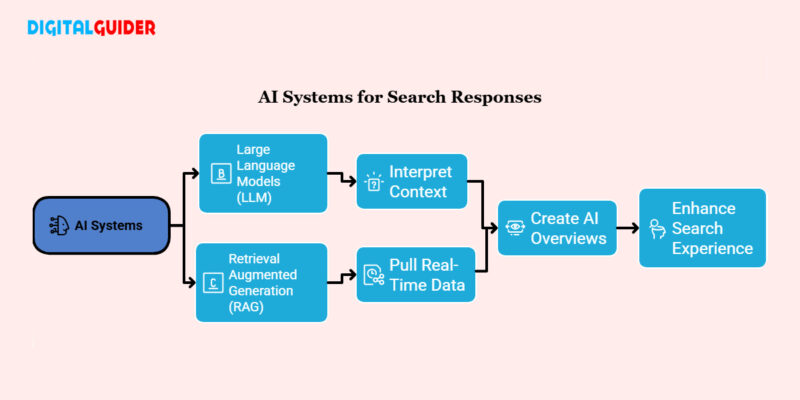
AI-generated search results typically rely on two methods to generate search responses:
➡️Large Language Models (LLM): These are trained on vast datasets, including structured data, which helps AI systems interpret context and relationships between entities.
➡️Retrieval Augmented Generation (RAG): RAG boosts pull-out real-time data from organic search results and ranking pages. This ensures that AI-generated responses remain accurate, current, and grounded in live content.
Together, these systems combine to create AI overviews and generative summaries that enhance the search experience by providing quick, relevant, and conversational answers.
After understanding what GEO is and its mechanism it is important to understand the differences between traditional SEO and GEO to see how this change is shaping search with new strategies.
How is GEO different from Traditional SEO?
🤔 Still wondering which optimization strategy your digital content truly needs—traditional SEO or the new-age GEO?
Let’s break down the key differences between Traditional SEO and Generative Engine Optimization (GEO) across four core aspects:
🎯Targeted Search Engines
🧱Content Structure
📊Success Metrics
🧠Strategic Flexibility
| Aspect | Traditional SEO | Generative Engine Optimization (GEO) |
| Targeted Search Engines | Focuses on traditional search platforms like Google and Bing that list results. | Aims at AI-powered search systems that generate direct answers |
| Content Structure | Emphasizes keyword usage, on-page SEO elements, and link-building. | Emphazises good content with sources, and statistics, to support AI summarization. |
| Success Metrics | Performance is evaluated by metrics such as CTR, bounce rate, and user engagement. | Tracks how frequently content appears in AI-generated overviews or is cited by AI tools. |
| Strategic Flexibility | Offers general strategies applicable across multiple content types and industries. | Requires niche-specific approaches,like including verified data, to increase AI trustworthiness |
With that understanding of the difference between GEO & SEO, let’s now take a closer look at how Generative Engine Optimization functions behind the scenes.
How does Generative Engine Optimization Work?
Generative Engine Optimization helps to bridge the gap and build trust by making your brand more reliable and giving you more control over your online presence.
Moreover, by optimizing your content with structured data and direct queries, GEO ensures your content is not just ranked, but understood and trusted by generative engines.
Let’s break down the key factors to optimize content and to understand the GEO working:
🌐 Prove Your Expertise with Entity-Based SEO
Entities are grounded within knowledge networks, which consist of structured collections from Google’s Knowledge Graph, Wikipedia, and other trusted sources.
Generative Engine Optimization strategy uses entity-based SEO to help generation engines better understand the content. Unlike traditional keyword targeting, this approach emphasises defining topics, relationships, and context, which makes it easier for natural language processing (NLP) tools to reference your content more effectively—while also supporting E-E-A-T by reinforcing your expertise and trust signals.
For example, if someone searches for “ What are the best shoes for the winter in Texas” Rather than viewing this as a collection of unrelated words, AI understands it by recognizing important entities, characteristics, and the relationships among them:
✍️ Build Content That AI Values
Generative engine optimization prioritizes verified data, credible citations, and expert sources to improve content quality and worth in the search engine. The content should not only be well-written but should align with what users are searching for. The content should use relevant targeting keywords and avoid keyword stuffing.
Your content should be informative, easy to understand and conversational which provides clear and actionable insights that matches the intent behind users’ queries. Thus there is a higher chance it appears in AI-generated search summaries.
Pro tip: To make your content with respect to users’ intent use keyword tools like Google Search Console and “People Also Ask” to find conversational long-tail queries, etc.
🗣️ Write the Way People Talk
The digital world is rapidly adapting to strategies that align with a more humanized, conversational style of writing. Generative engines prefer content that imitates human conversations. Conversational Search Optimization involves structuring your content to align with natural speech patterns, typical queries, and dialogue-like formats. Therefore, this provides a friendly, human tone, structured, and Q/A style formatting matching the real-world search behavior.
Pro tip: Write in a conversational tone—this helps AI better understand user intent and aligns your content with relevant queries.
🧩 Make Your Content Context-Smart
AI relies on the core elements of Semantic SEO– the ability to understand context, relationship, and meaning. AI-generated search results incorporate semantic SEO practices to help your content get selected for more accurate and relevant AI summaries. It is important for generative engine optimization (GEO) where AI models use semantic understanding to generate accurate, relevant responses.
Pro tip: Integrating LSI keywords for related terms helps in semantic understanding to generate accurate, relevant responses. Combining it with internal linking, entity mentions, and connected subtopics would help in more visibility.
🧱 AI-Ready Content Formatting
A neat, clear structure is important for generative engines to pick the content for AI. Clear headings, shortened paragraphs, headers, bullet points and lists make the content easy and digestible for the generative AI engines. Also, incorporate AI-friendly language features like conversational writing style and direct answers.
Pro tip: Try using a structured layout using headers and pointers, also try using question-based headers (What… Why?) to align with AI-generated FAQs.
🏷️ Use Schema to Stand Out in AI Results
Structured data is essential for how AI understands your content. By implementing schema markup (such as FAQ, Article, or How-To), you can enhance your visibility in AI search results and increase your chances of being featured.
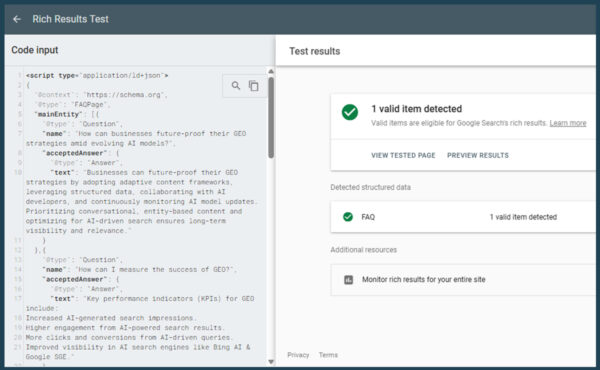
Pro tip: Use tools like schema markup generator (JSON-LD) for creating schema markup, and also tools like Google’s Rich Results Test to ensure your schema is properly implemented and eligible for enhanced snippets.
7 Strategies for Effective Generative Engine Optimization
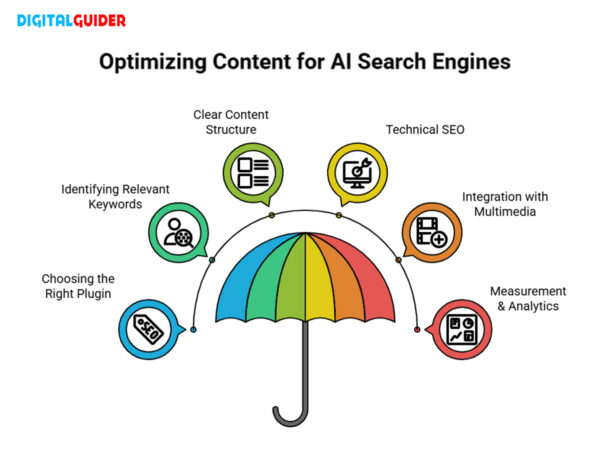
Now that we have understood the workings of generative engine optimization (GEO), let’s explore the practical steps to start optimizing your content for AI-driven search engines.
Choosing the Right Plugin
A qualified SEO plugin can be a game-changer for streamlining GEO efforts:
- Helps optimize website content for AI-driven search engines
- Enhances visibility in AI-generated responses
- Assists with keyword research and content optimization
- Simplifies structured data implementation for better indexing
| Some of the best SEO plugins that can be used to streamline GEO efforts are: Yoast SEO All in One SEO (AIOSEO) |
Identifying Relevant Keywords
- Crucial for enhancing visibility in AI-driven search results
- Ensures content relevance within the generative search ecosystem
- Goes beyond traditional keyword matching to fit broader informational needs
- Focuses on user intent, including conversational phrases and natural queries
- Helps align content with how AI understands and responds to questions
| Some useful AI-powered keyword Research Tools are: Google Keyword Planner SEMrush SEO.AI |
Clear Content Structure
- Helps AI-driven search engines understand and use your content effectively
- Prioritizes clarity and logical flow over keyword frequency
- Focuses on aligning with user intent, not just keyword stuffing
- Organized structure and hierarchy improve content interpretability
- AI models prefer easy-to-navigate formats with contextual relevance
| Some Tools that can be used to achieve a clear content structure are: AISEO’s TruSEO Analysis (Help in on-page SEO practices and readability) ClearScope (helps in making the content relevant) |
Technical SEO for Generative Engine
- Ensures AI-driven search engines can easily crawl, index, and understand your site
- Improves site speed to support fast content delivery for AI overviews
- Enhances crawlability so generative engines can access all relevant content
- Implements structured data to provide clear context and entity relationships
- Supports overall site health, boosting performance in AI-generated results
Thus, it is important to understand that content is king, but technical SEO cannot be overlooked.
📌Interesting Read: SEO Checklist: 50+ Best Practices for Complete Website Optimization
Integration with Multimedia
- Enhances content value by offering diverse formats
- Boosts user engagement with videos, infographics, and visuals
- Helps generative engines understand and enrich content context
- Increases dwell time, signalling quality and relevance to AI
- Improves chances of ranking in AI-generated search results
Therefore, Multimedia is more than a nice-to-have in your content
Measurement & Analytics
Generative AI is currently not measurable as other paid search channels, but tracking and measuring aspects of generative AI performance.
- Measures the effectiveness of content strategies within generative AI search platforms
- Tracks generative AI performance, such as responses from platforms like Chatgpt, Gemini AI, and Perplexity
- Helps analyze conversion performance and content impact within AI-generated search results
- Improves content alignment with user intent and AI preferences through performance insights
| The traffic can be analyzed with the help of a tool, Google Analytics, as shown in the image below 👇 |
Generative Engine Optimisation: Key Practices & Common Mistakes
📌 Best Practices of GEO | ⚠️Common mistakes to avoid in GEO |
| ✅Focus on user intent | ❌Keyword Stuffing |
| ✅Use natural language | ❌Abandoning Traditional SEO |
| ✅Use Structure data | ❌Using outdated content |
| ✅Incorporate Entity-Based SEO | ❌Over-optimised for SEO |
| ✅Use high-quality multimedia | ❌Ignoring aspects of Technical SEO |
| ✅Prioritize E-E-A-T | ❌Neglecting Schema markup |
TL;DR
Let’s dive into the details and concepts discussed in this blog
👉 GEO is not replacing SEO but evolving it — blending traditional best practices with new AI search expectations.
👉GEO = SEO for AI-generated search results, focusing on conversational, structured, and entity-rich content.
👉Traditional SEO tactics aren’t enough — AI engines prefer natural language, semantic relevance, and contextual clarity.
👉 Using structured data, focusing on user intent, adopting conversational formatting, and integrating multimedia are the key features of Generative engine optimization.
👉E-E-A-T matters: Show experience, expertise, authority, and trustworthiness to stand out in generative search.
Want to stay ahead in AI search? Our generative engine optimization services help you optimize content that ranks and resonates — even when there’s no click.
FAQ’s
1. How is GEO different from voice search optimization?
Voice search targets spoken queries, while GEO focuses on AI-generated summaries using deeper semantic and contextual understanding.
2. Should I optimize every page for Generative Engine Optimization?
No. Focus on informational and evergreen content like blogs, FAQs, and guides, where AI is most likely to pull summaries from.
3. Can traditional SEO tools help with Generative Engine Optimization?
They help with site health and keyword tracking (SEMrush and Ahrefs), but not GEO-specific performance. GEO relies more on content format and structure.
4. Is GEO relevant for local SEO?
Yes. Generative engines can answer location-based queries, so optimizing local pages with accurate NAP info and schema is beneficial.
5. Can I repurpose existing SEO content for GEO?
Yes, but update it with conversational phrasing, clear formatting, and semantic-rich language to align with AI search expectations.
6. Do LLMs understand visual content like images or infographics?
They understand it through metadata and context. Use alt text, captions, and descriptive file names for better interpretation.
7. Does GEO support zero-click searches?
Yes. GEO boosts visibility in AI-generated answers, helping your brand appear even if users don’t click through.
8. Is there a risk of content being used without attribution in generative search?
Yes. Some AI models don’t always cite sources, so branding, internal links, and author bios help ensure recognition.
9. How often should GEO-optimized content be updated?
Ideally, every 3–6 months, especially for industry trends, stats, or evolving queries, to stay relevant in AI-driven results.
